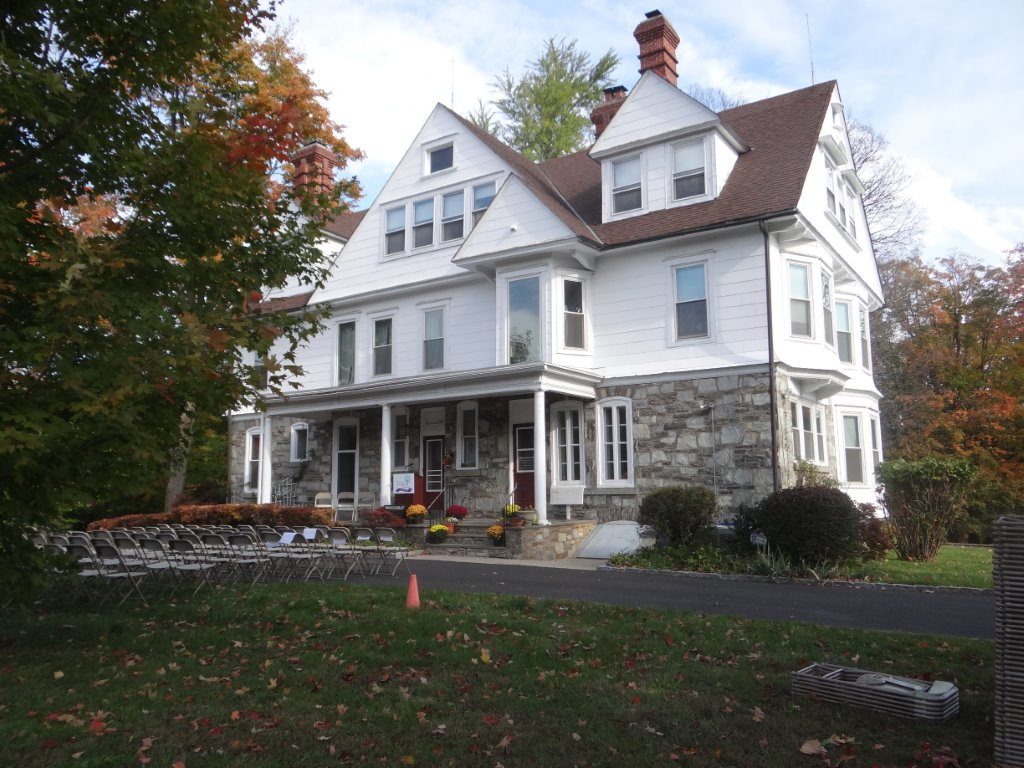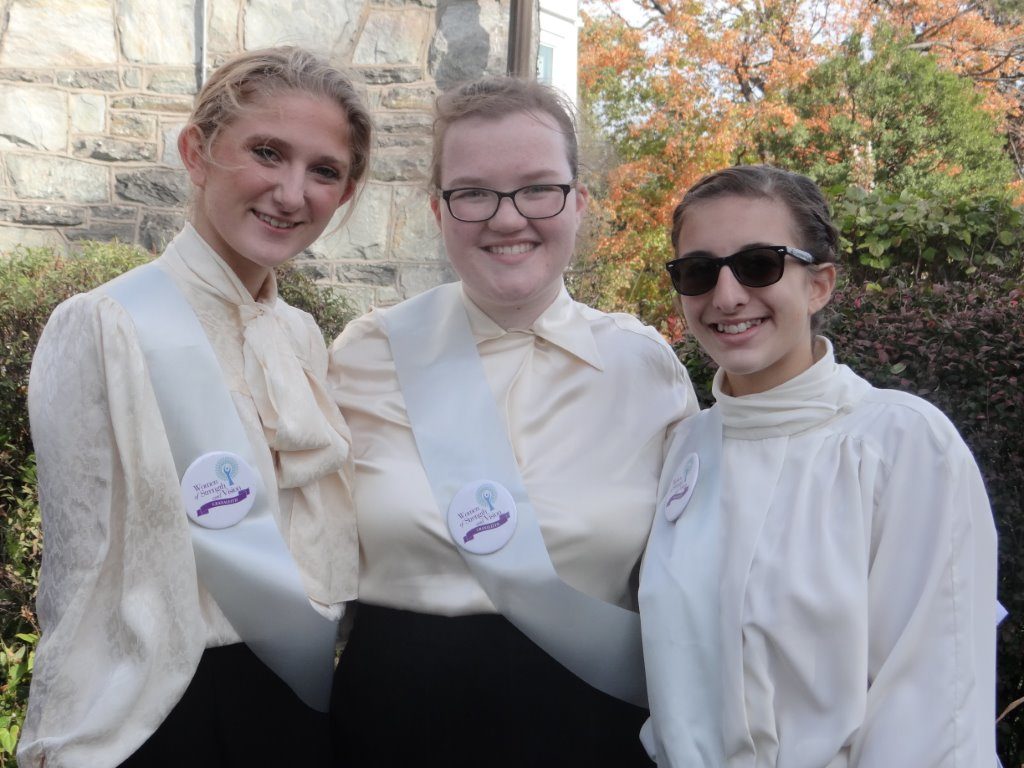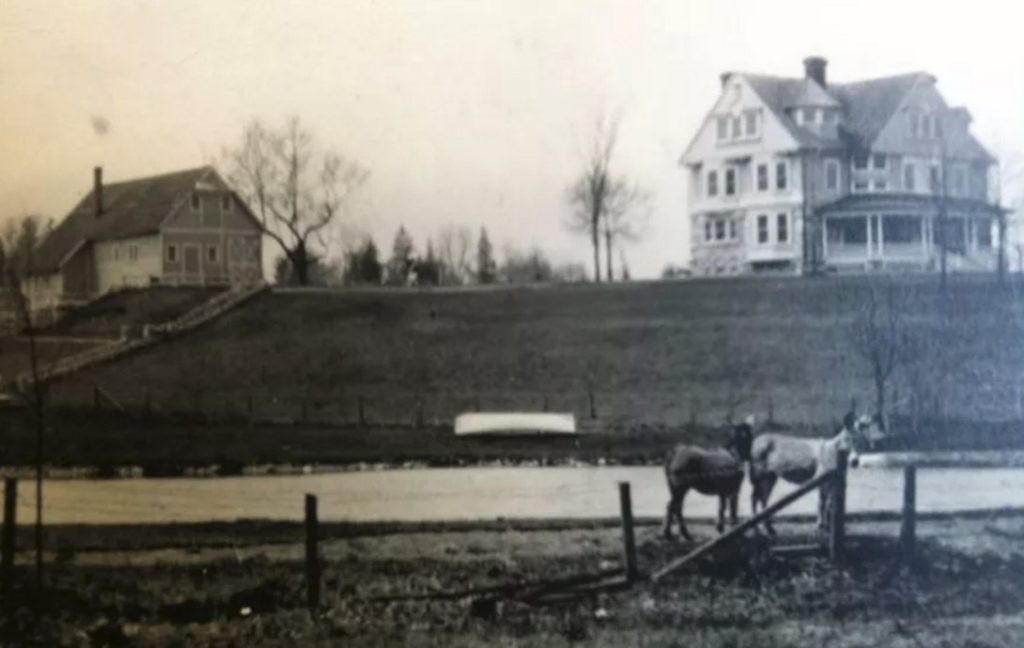High on a hill overlooking the Somerton neighborhood of Philadelphia stands Cranaleith Spiritual Center, a beautiful Shingle style house that overlooks ten acres of gardens, groves of trees, a pond, and a sensitively-designed modern retreat facility. It’s a lovely place nestled amongst a quiet residential neighborhood. But beneath the bucolic setting is a significant story about the struggle for equality, ties to important figures and events in the women’s suffrage movement, and an organization’s commitment to preserving and promoting those legacies. In January I spoke with Cranaleith staff about how they’re using those stories to raise the profile of the organization and attract new audiences to the facility and its mission.
Cranaleith, known historically as Mill-Rae, has received a fair amount of press over the last year. The Philadelphia Inquirer, Curbed Philly, and Hidden City have all published articles illuminating the stories of Rachel Foster Avery and her architect Minerva Parker Nichols. Avery was a young, eager, and active leader in the women’s suffrage movement of the late 19th and early 20th centuries. Susan B. Anthony regarded her as her “most cherished young lieutenant”, but was none too happy when Rachel married Cyrus Miller Avery in 1888 (Anthony believed marriage distracted the suffragettes from their true calling).

Cranaleith, c. 1890, known historically as Mill-Rae, Philadelphia. Courtesy of Cranaleith Spiritual Center.
Both Foster and Avery came from families with deep activist and social reform roots, and in 1890 the now Mrs. Avery put her family’s wealth to work for the advancement of the suffrage movement. She commissioned Minerva Parker Nichols, the first American woman to practice architecture independent of a male business partner, to design a home for her family, which she named Mill-Rae. More than a family home, Nichols and Avery collaborated to create a place with numerous guest rooms and ample gathering places where women could meet to plan rallies and advance their cause. It was difficult for women’s suffrage leaders to secure meeting space at the time, given that most social clubs and businesses were male dominated. Mill-Rae became a nerve center for these pioneers, including Susan B. Anthony who mended fences with Avery and stayed at Mill-Rae for extended periods. It was from Mill-Rae that Rachel led the nation-wide correspondence campaign to raise a pension for Anthony to support her in the last years of her life. The Avery’s sold Mill-Rae in 1905.
The story of Rachel Foster Avery and the home she built was well known to the subsequent owners of Mill-Rae and the leaders of Cranaleith Spiritual Center. In 1906, Joseph C. Trainer (1872-1943) a former member of the Pennsylvania House of Representatives and a prominent figure in Philadelphia’s Catholic community, purchased the property. Trainer renamed the property Cranaleith in honor of the family’s ancestral home in Ireland. In the late 1950s Joseph’s granddaughter, Mary, joined the Sisters of Mercy and in 1996 she turned the family home into a retreat center to “attend to the heart and spirit of the individual.” The family donated the property to the Sisters and Cranaleith Spiritual Center was born as a separate nonprofit organization.
Cranaleith Spiritual Center’s mission and programs are a fulfillment of the critical concerns of the Sisters of Mercy: Earth; Women; Nonviolence; Racism; Poverty. The organization organizes interfaith lectures on these issues, hosts private groups in retreat settings, and sponsors therapy programs for individuals working through these issues. They also sponsor a community garden that teaches individuals horticultural skills and provides food to allied organizations. On the surface, Cranaleith’s mission isn’t directly related to its home at historic Mill-Rae…until you look a little deeper.
Veneta Lorraine, Cranaleith’s Executive Director until January 2017, came to the organization with a strong personal interest in women’s history. She immediately gravitated toward Rachel and the role of the property in the suffrage movement. It wasn’t until Molly Lester, then a graduate student at the University of Pennsylvania’s Graduate Program in Historic Preservation sent her an email inquiring about the property for her Master’s thesis that her interest in Mill-Rae was truly piqued. Molly was researching Minerva Parker Nichols and looking for surviving examples of her work. Veneta’s response – “Minerva who?” When Molly shared the story of Minerva’s legacy as an underappreciated pioneer in American architecture, Veneta was hooked and convinced that the property’s history could be leveraged for its future.
Veneta wasn’t the only person at Cranaleith who saw the value in the site’s history or its relationship to the organization’s mission. During the construction of the new retreat center and administration building in 2011/2012, Sister Mary convinced excavation contractors to carefully relocate stones from the property to create a memorial to the Lenni Lenape who had been drawn to the property by the natural confluence of five springs. The Lenape were a matriarchal culture, so the intersection of the site’s long ago residents with the suffrage movement made Cranaleith’s interest in capitalizing on the property’s history so much more logical.
In 2014, Cranaleith’s board and staff began contemplating ways for the organization to raise its profile, fundraise, and attract new donors – perennial needs for nonprofits of all kinds. Remembering that inquiry from Molly Lester about Minerva Nichols, Veneta took the idea of digging deeper into Cranaleith’s history to the fundraising committee – that’s when I first visited the property. After some deliberation, the Board and Sisters agreed to pursue listing in the National Register of Historic Places to fully document the property’s history and make the organization eligible for grants. Molly Lester agreed to write the nomination and Cranaleith/Mill-Rae was officially listed in the National Register in January 2017.

Dr. Stephanie Toothman, Keeper of the National Register and Sister Mary Trainer, courtesy of Cranaleith Spiritual Center.
In anticipation of the National Register listing, the Cranaleith board organized an event in October 2016 to celebrate women whose work helped elevate the status of other women. Women of Strength and Vision featured a panel of women from Philadelphia’s business community to share reflections on the values that make contemporary women change agents in the world. Dr. Stephanie Toothman, Associate Director of the National Park Service and Keeper of the National Register, participated in a welcome ceremony that celebrated the remarkable women in Cranaleith’s past. She was joined by students from Villa Joseph Marie High School, a Sisters of Mercy academy in Bucks County, who portrayed Rachel Foster Avery, Susan B. Anthony, Minerva Nichols, and Mother Catherine McAuley, founder of the Sisters of Mercy, in dramatic presentations about the women’s lives. The organization also introduced a new membership category for donors interested in supporting stewardship of the property and women’s history programming. The goal is to attract 202 founding members, the same number of women who answered Rachel Foster Avery’s call for donations to Susan B. Anthony’s pension.

Students from Villa Joseph Marie portrayed Susan B. Anthony, Rachel Foster Avery, and Minerva Parker Nichols at the Women of Strength and Vision Event in October 2016, courtesy of Cranaleith Spiritual Center.
So what are the outcomes of Cranaleith’s journey into its past? The National Register listing and the Women of Vision event attracted significant regional news coverage, achieving one of the organization’s goals of raising its visibility in the community. Since the event, the staff have received inquiries about rental opportunities and programs from individuals and groups who hadn’t heard of Cranaleith before the recent press coverage. The facility also hosted a quarterly gathering of Women in Preservation, an informal networking group in the Philadelphia region, a two-for-one opportunity to reach new target audiences. The October event may also lead to more ongoing programming related to women’s issues and history. Historic places like Mill-Rae need caretakers of all kinds and missions to survive and while only time will tell if these efforts result in a larger donor base, one thing is for certain – more people are talking about Cranaleith, Rachel Foster Avery, and Minerva Parker Nichols now than any time in recent memory – something that can only result in good things for the property and its stewards.
Special thanks to Veneta Lorraine and Mary Ann Smith for speaking with me for this article and providing the photographs.
Comment Policy
PHMC welcomes and encourages topic-related comments on this blog. PHMC reserves the right to remove comments that in PHMC’s discretion do not follow participation guidelines.
Commenters and Comments shall be related to the blog post topic and respectful of others who use this site.
Commenters and Comments shall not: use language that is offensive, inflammatory or provocative (this includes, but is not limited to, using profanity, obscene, or vulgar comments); disparage other commenters or people; condone illegal activity; identify the location of known or suspected archeological sites; post personal information in comments such as addresses, phone numbers, e-mail addresses or other contact details, which may relate to you or other individuals; impersonate or falsely claim to represent a person or an organization; make any commercial endorsement or promotion of any product, service or publication.
If you would like to comment on other topics not related to this blog post but related to PHMC, please fill out the PHMC Contact Us Form.





Leave a Reply